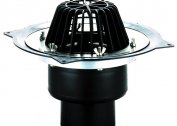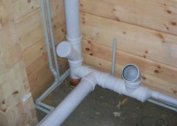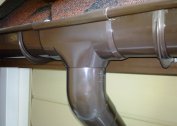The construction of a residential sector in a site remote from the city is accompanied by a number of problems. The main problem is the inability to bring urban sewers to such sectors. The only solution to the issue of sewage is a cesspool. Cottage areas are equipped with a cesspool system. There are several options for cesspools. Designs and features of them will be considered in this article.
Symptoms and causes of malfunction
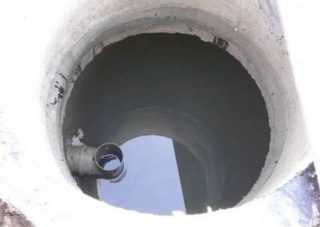 Closed cesspools have a big drawback - it is extremely fast filling. They are used as an autonomous sewer. Due to deficiencies, drainage maintenance causes problems. Since you have to clean it 1-2 times a month. Maintenance requires cash investment.
Closed cesspools have a big drawback - it is extremely fast filling. They are used as an autonomous sewer. Due to deficiencies, drainage maintenance causes problems. Since you have to clean it 1-2 times a month. Maintenance requires cash investment.
There are signs by which to determine the state of the system:
- the bottom is covered with silt;
- the walls of the pit are covered with deposits that are difficult to scrub;
- pungent odor;
- quick filling of the cavity of the drainage system.
The bottom is covered with silt due to a prolonged lack of cleaning. The most striking sign that the tank is covered with sludge is a significant reduction in working volume. The rate of filling of the waste volume is reduced. As a result, the system overflows and needs to be pumped out. Another sign of siltation is the deposition of fat masses on the walls of the container. They significantly reduce the volume and speed of filling. It is very simple to assess the condition of the pit by visual inspection of the hatch. Silt deposits will be visible on its surface. The second option is a very pungent smell.
Types of Drain Pits
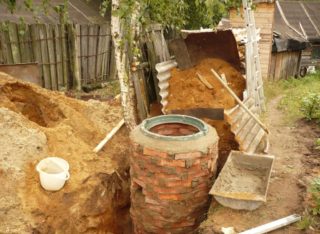 The performance of the drain mechanism is affected by its design.
The performance of the drain mechanism is affected by its design.
There are probable reasons for the rapid filling of the drain cavity:
- Often the system quickly fills due to the fact that it is not designed for the incoming volume of effluents.
- The drain is clogged with solid waste, tree leaves, branches, and ground.
- Effluents come in contact with the environment.
- Lack of regular cleaning. Greasy particles adhere to the walls and reduce the volume of the cavity, preventing the outflow of fluid.
In summer cottages, a home-made pit is used. They are called cesspools without a bottom. The drainage system is presented in the form of a well. He rummages away from home. The advantages of such a drain are:
- low price;
- simplicity of operation;
- there are no difficulties when cleaning.
The pit is endowed with disadvantages:
- environmental damage of adjacent territory;
- quickly filled up;
- easily covered with silt;
- in winter drains freeze.
Sealed pits with a bottom - this is a more complex design. The bottom is usually concreted. Walls are made of:
- brick;
- reinforced concrete rings;
- metal tanks.
The advantages of this cesspool mechanism include:
- tightness of the structure;
- less impact on the environment;
- lack of unpleasant odors.
The disadvantages include:
- requires increased care;
- periodically need to be cleaned and repaired.
Construction Recommendations
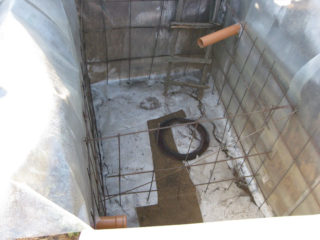 To fundamentally prevent the rapid filling of the pit, a second cesspool is rummaged and connected to the first. This will increase the working volume and degree of purification. However, it is likely that sanitary standards will not be respected. Therefore, before such a procedure, calculations are performed. They determine the feasibility of the method.
To fundamentally prevent the rapid filling of the pit, a second cesspool is rummaged and connected to the first. This will increase the working volume and degree of purification. However, it is likely that sanitary standards will not be respected. Therefore, before such a procedure, calculations are performed. They determine the feasibility of the method.
Builders give a number of recommendations when constructing a cesspool:
- During construction leave a margin of 1 meter to the top edge. Such a solution will prevent overflow of the pit with waste. Reduce gas accumulation
- The depth of the pit is not more than 3 meters. Otherwise, the sewers do not pump out all the waste.
- Sewer pipes must be insulated. Otherwise they will freeze in winter
Export by machinery
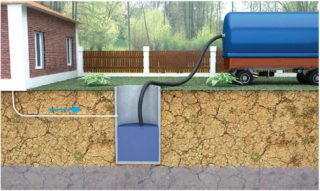 If the bottom is silted up and the pit is quickly filled, then there are services for pumping sludge masses in the private sector. It is believed that this is the most effective way of cleaning. According to GOSTs, such cleaning should be done once every half a year. Otherwise, the liquid will overflow the tank. The advantage of the method is the professional approach of the executor of the procedure.
If the bottom is silted up and the pit is quickly filled, then there are services for pumping sludge masses in the private sector. It is believed that this is the most effective way of cleaning. According to GOSTs, such cleaning should be done once every half a year. Otherwise, the liquid will overflow the tank. The advantage of the method is the professional approach of the executor of the procedure.
The process takes 20-60 minutes. It all depends on the volume of the cavity and the degree of contamination. Sometimes, the accumulation of silt masses can reach critical volumes. In this case, before the equipment starts pumping out, preliminary preparation is carried out. Various chemicals are used that corrode part of the clusters.
Chemicals
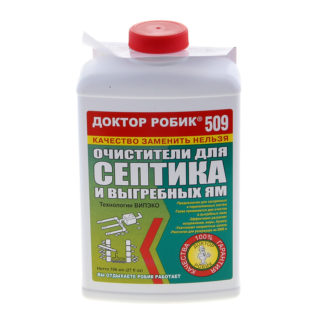 Chemicals are based on formaldehydes. Also included are ammonium compounds and natural oxidizing agents.
Chemicals are based on formaldehydes. Also included are ammonium compounds and natural oxidizing agents.
Formaldehyde cleaners are rare and hard to find. Their chemical composition is extremely dangerous for the environment. In a number of states, these funds are prohibited by law. Processing a cesspool without a bottom showed that the affected area of the land is not able to bear vegetation and is very poor in minerals. Such land is able to produce fruit again only after 7-10 years.
Ammonium compounds are substances of medium effect. Because they perform best at a positive temperature. However, they are not so detrimental to the environment. In practice, live bacteria work well. Therefore, the profitability of ammonium compounds is doubtful.
The best option of all chemicals is nitrate oxidizing agents. They are very similar to the same fertilizers. The impregnated sludge that remains after the use of these oxidizing agents can be used as fertilizers. Since nitrates contain useful substances necessary for soil fertility.
Biological preparations
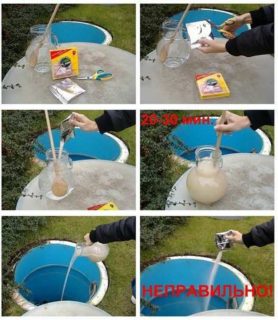 These include living bacteria. They became the most popular means for cleaning cesspools. The main advantage is the absence of a negative effect on the environment. Bacteria act as catalysts for natural processes. Which occur in the tank. They feed on organic waste, decomposing it into components. The entire contents of the pit is divided into silt and water. Moisture is absorbed into the soil without harming it. And the sediment has to be pumped out. It is used as fertilizer.
These include living bacteria. They became the most popular means for cleaning cesspools. The main advantage is the absence of a negative effect on the environment. Bacteria act as catalysts for natural processes. Which occur in the tank. They feed on organic waste, decomposing it into components. The entire contents of the pit is divided into silt and water. Moisture is absorbed into the soil without harming it. And the sediment has to be pumped out. It is used as fertilizer.
Bacteria can be divided into two groups:
- aerobic;
- anaerobic.
Aerobic bacilli are effective for pits with ducts. Because they work only when interacting with oxygen. They perfectly clean the liquid, after which it can be used on the farm.
Anaerobic microbes do not need a constant flow of air. These bacteria feel comfortable in any conditions. Their minus is that they are not as effective as anaerobic. The water after treatment is very muddy and poorly absorbed by the soil. Sludge is not suitable as fertilizer.
Anaerobic and aerobic bacteria are not intended for use in winter. Since substances have a temperature regime of +4 to +30 degrees Celsius. Afraid of the action of reagents. Therefore, chemicals and bacteria cannot be used simultaneously.
Prevention and Prevention
To prevent stagnation of water in the cavity, it is enough to monitor the frequency of cleanings. About once every half a year it is recommended to pump out the waste. In between cleansing, it is advised to regularly use preparations based on bacteria. They significantly speed up cleaning and fill the soil with nutrients.
It is also recommended to flush the drain pipe system. Fat fractions accumulate on the walls of the pipes. And because of this, the water permeability decreases.
It is advisable to install grease traps on all household kitchen appliances:
- crane;
- washing;
- other devices working with water.
Grease traps will reduce the percentage of mass entering the drain pipes. What will provide the best passability. The ideal option is to use a septic tank on the way of drains from the house to the drain pit. Septic tank purifies water by 70-95%. And pours it into the ground in a safe condition for him.
In order to prevent frequent siltation of the drainage cavity, a pit should be designed taking into account a further increase in the sources of water discharge into the sewer. In this case, the pit should not be filled more than 75% of its original volume during operation.
